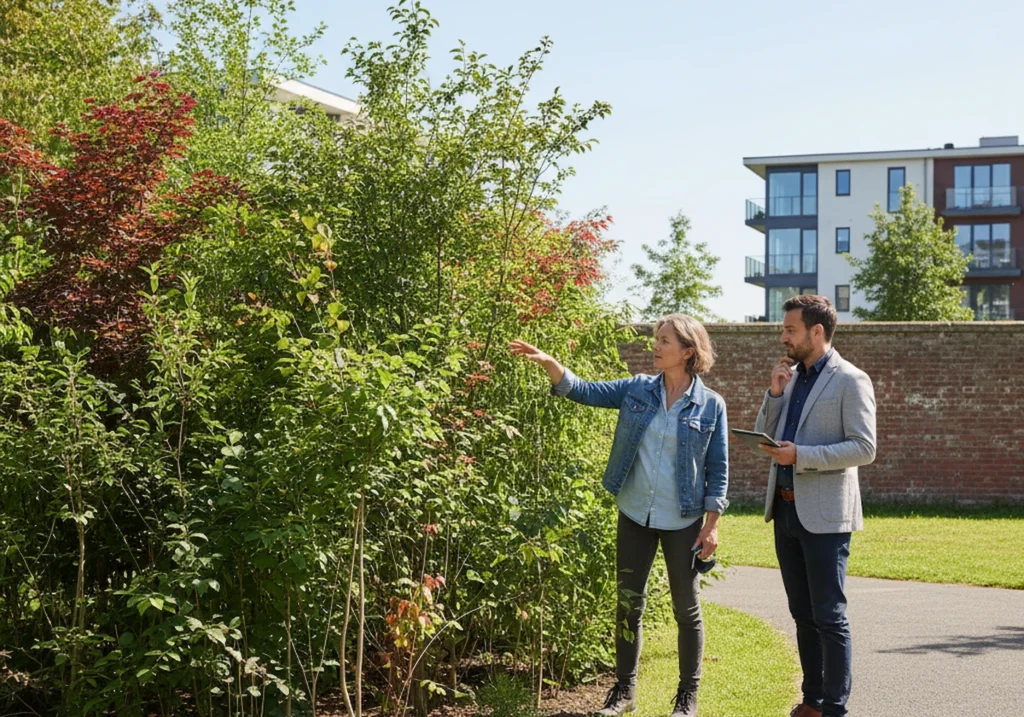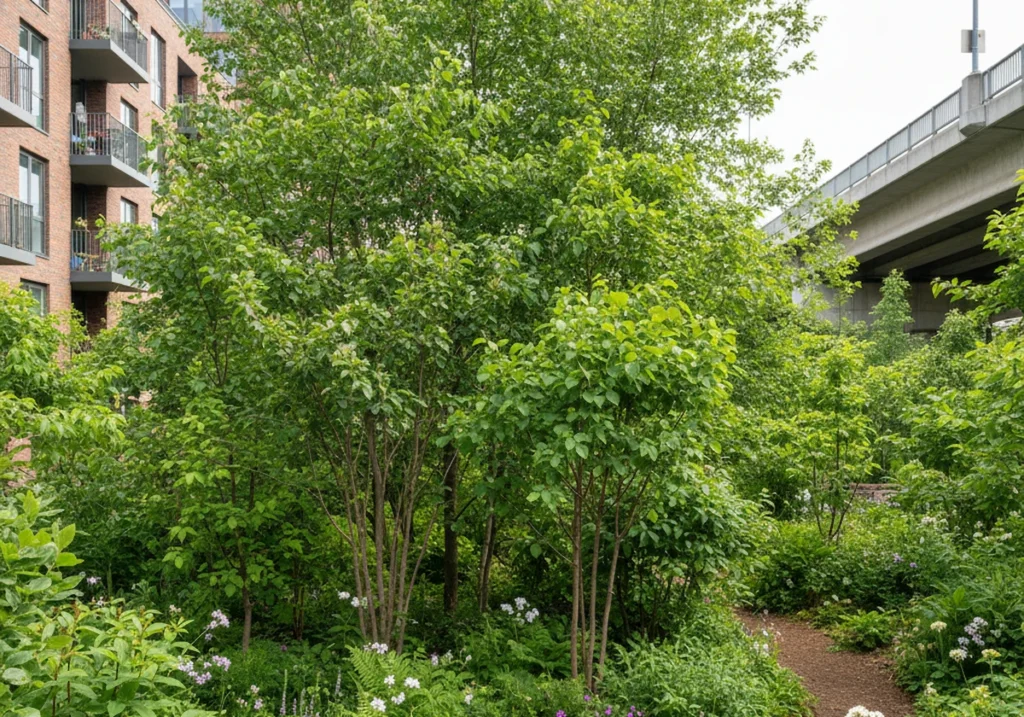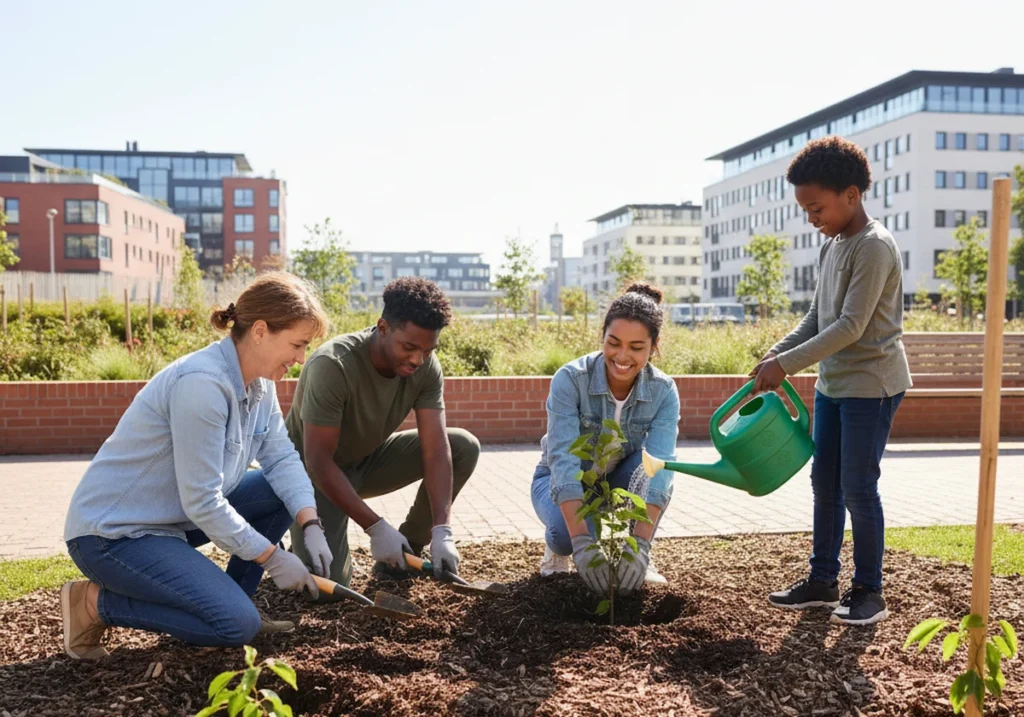Walk through any major city and you’ll notice something’s missing. Concrete dominates everywhere while green spaces keep shrinking. The thing is, most city residents now feel disconnected from nature, with parks sometimes kilometres away from home.
Tiny forests tackle this problem head-on. These mini ecosystems pack dozens of native trees into spaces the size of a tennis court. What’s more, they grow ten times faster than traditional forests. Within two years, these tiny forests bring back wildlife, cleaner air, and biodiversity to urban areas.
Let’s explore what tiny forests are, see where cities are planting them, and learn how you can start your own.
What Is a Tiny Forest?
A tiny forest packs dozens of native trees into a tennis court-sized plot, growing 10 times faster than traditional forests. The Miyawaki method, developed by Japanese botanist Akira Miyawaki, mimics how nature creates forests through dense planting structure and careful species selection.
Three things make this approach different:

- Dense Planting: The Miyawaki method plants 3-5 trees per square metre, creating densely packed patches that mimic natural forest density. This tight spacing encourages trees to compete for sunlight, which speeds up their growth rates. Sounds crowded? That’s the whole point.
- Native Species Selection: Plant species are carefully chosen based on your local climate conditions, soil type, and regional ecosystem requirements. This includes soil enrichment with organic matter to build the foundation for biodiversity.
- Minimal Maintenance: These tiny forests need intensive care for two years. After that, they become completely self-sustaining without watering or fertilisers, functioning as natural carbon sinks and urban wildlife oases.
From what we’ve seen, this method turns forgotten urban corners into thriving forests faster than most people expect. Pretty wild for something that fits in a space smaller than your backyard.
Cities Around the World Planting Tiny Forests
From Mumbai to Melbourne, local communities are turning empty lots and neglected spaces into small forests. The tiny forest movement has picked up speed over the past decade, with indigenous peoples and urban forestry groups leading efforts to tackle biodiversity loss and climate change.
Here’s where these projects are taking root:
Europe Leads the Way
The Netherlands has planted over 200 tiny forests since 2015, with schools using them as outdoor classrooms. Take Utrecht’s IKC Tuindorp school forest. It went from bare schoolyard to dense woodland in three years.
We’ve noticed something interesting while studying these European projects. Schools treat the forests as living classrooms where students collect environmental data and learn about climate action firsthand.
Growth in Asia and Beyond
Mumbai’s story stands out with 50 tiny forest sites across the city. Local communities look after each one, with volunteer groups meeting on weekends to plant and maintain these urban forests together.
In Japan, cities honour botanist Akira Miyawaki differently. They plant memorial forests in earthquake-affected regions, helping both environmental recovery and community healing. The weekend planting model also caught on in Pakistan, where hundreds of residents join events that build awareness about biodiversity challenges and habitat loss.
Beyond the community spirit, these tiny forests deliver real environmental benefits that cities desperately need.
Cooling Cities and Capturing Carbon
Every tiny forest acts like a natural air conditioner for its neighbourhood. The temperature difference is real, too. Urban trees reduce surrounding air temperatures by 2-4 degrees Celsius compared to concrete areas during summer months. That’s basically free air conditioning without the electricity bill.
The climate benefits go beyond just cooling. Dense native plantings in these forests capture 30 times more carbon dioxide than standard grass lawns of the same size. The multilayered structure creates more leaf surface area for photosynthesis, and the soil acts as a natural carbon sink. What’s interesting is how trees respond when planted close together. They compete for sunlight, which pushes them to grow faster.
There’s another example worth mentioning. Paris installed 15 tiny forests to combat the urban heat island effect and recorded 3-degree temperature drops within 50 metres of each forest. These small patches of nature-based solutions help cities adapt to climate change and reduce carbon emissions at the local level.
The forests handle stormwater differently than traditional green spaces, too. Dense root systems absorb water that would otherwise flood streets during heavy rain.
Bringing Back Birds, Bees, and Biodiversity
What can 200 square metres of forest do that a regular park can’t? The answer lies in how these tiny forests pack biodiversity into small spaces. Traditional parks look neat, but they don’t offer much variety for wildlife. Tiny forests work differently.
Here’s a quick comparison:
|
Benefit |
Tiny Forest |
Traditional Park |
|
Bird species |
15-20 |
5-8 |
|
Native plants |
40-60 |
10-15 |
|
Growth speed |
10x faster |
Standard |
Note: These numbers are approximate and may vary depending on factors like location, climate, and surrounding urban environment.
You might be wondering how such a small space achieves this. Native plant diversity attracts around 18 different bird species within three years. Regular parks only manage about five. The reason is simple: more plant species means more food sources and better shelter.
The forest structure helps too. You’ve got tall canopy trees, medium-height shrubs, and low ground cover all packed together. Urban wildlife that can’t find nesting spots in cities suddenly have options. Each layer creates different habitats, which helps tackle biodiversity challenges and habitat loss.
Pollinators love these forests. Butterfly and native bee populations triple within three years. What’s more, their numbers rise in surrounding residential gardens too, spreading genetic diversity beyond the forest itself. These small patches help connect isolated green spaces and support the terrestrial biodiversity that cities keep losing.
Healthier Air, Happier People
Residents living near tiny forests report something unexpected. They sleep better. (And yes, we’ve all tried counting sheep with questionable results.)
The health impacts show up in several ways:
- Cleaner Air: Tiny forests filter particulate matter and nitrogen dioxide, reducing air pollution by 20-30% in immediate surroundings. That cleaner air makes a real difference for public health, especially in dense urban areas where pollution levels stay high year-round.
- Lower Stress: British research found people living near tiny forests reported 28% lower stress levels and improved sleep quality. Mental health benefits show up in other ways too. Children with forest access show stronger immune systems and spend 40% more time outdoors than their peers.
- More Movement: Morning walks through neighbourhood forests increase daily physical activity. Residents report better cardiovascular health markers after these small forests arrive in their communities.
The combination tells a clear story. Clean air, green spaces, and nature contact support human health in ways regular parks can’t match. Your well-being improves when you’ve got forests within walking distance.
Why the Miyawaki Method Thrives in Urban Spaces
85% of tiny forests survive without watering after year three. Believe it or not, these forests practically look after themselves.
Multi-layered planting creates stable microclimates that retain moisture. The dense canopy reduces evaporation, and thick leaf litter on the forest floor keeps soil moisture high. The forests eliminate the need for irrigation after the establishment period. Urban heat islands become less severe, too, as these nature-based solutions provide ecosystem services that traditional landscaping can’t match.
Through investigating multiple urban projects, we found that maintenance costs drop dramatically after year three. Initial setup won’t cost an arm and a leg compared to traditional landscaping projects, either. Costs range from $38-60 AUD per square metre. That becomes cheaper than lawn maintenance over ten years when you factor in mowing, fertilising, and watering.

Here’s a real example. The Netherlands city of Zaanstad turned a 1,400 square metre carpark into a forest for roughly $53,000 AUD. The project included soil enrichment, native tree species, and community involvement. After three years, volunteers only visit twice yearly for minimal tree pruning and management. Compare that to weekly lawn mowing schedules, and the time savings add up fast.
The soil health improves year after year. Fallen leaves decompose and enrich the ground naturally. The natural cycle, where forests maintain themselves through decomposition, supports biodiversity and reduces carbon emissions without constant human intervention.
How to Plant Your Own Tiny Forest
You need less space than you think. Even a small backyard works for planting your own tiny forest using the Miyawaki planting methodology.
Start by following these steps:
- Site Selection: Choose a site with a minimum of 20 square metres (roughly the size of a tennis court) receiving at least four hours of daily sunlight. Urban areas with poor soil can still work with proper preparation.
- Soil Preparation: Test and amend soil with organic matter, creating a 1-metre deep nutrition-rich base layer for root development. The test should include pH levels, nutrient content, and drainage capacity for proper soil enrichment. Add compost, manure, and local organic materials to build soil health. (Skipping this step is the main reason most urban plantings fail within months.)
- Species Selection: At this stage, select 20-30 native tree species matching your region. Avoid invasive species that outcompete local wildlife for food sources. You’ll spot native species recommendations here and there from local councils and conservation groups. Focus on plant species that support biodiversity and provide habitat for indigenous peoples’ traditional food plants where relevant.
- Dense Planting Structure: It’s time to plant seedlings 30-50 centimetres apart in random patterns, creating densely packed patches. Mix canopy trees with understory shrubs and ground cover. This tight spacing mimics how forests grow naturally.
- Early Care: Water thoroughly twice weekly for the first two years. Mulch heavily around seedlings and remove weeds competing with young trees. Tree management during this phase determines long-term success.
- Step Back: After year two, let natural forest processes take over with minimal human intervention. The forest becomes self-sustaining, requiring only occasional tree pruning for safety.

Pro tip: Document your forest’s progress with photos every few months to track biodiversity growth and share your success with local communities.
Start Your Tiny Forest Journey Today
Tiny forests grow ten times faster than traditional forests, bring back biodiversity, cool urban heat, and improve air quality. The benefits speak for themselves.
If community environmental projects are your cup of tea, tiny forests offer the perfect starting point. Connect with local communities already planting tiny forests in your area, or start your own neighbourhood project. Even 20 square metres creates a measurable environmental impact for surrounding wildlife and residents.
Climate change and biodiversity loss won’t fix themselves. These forests show what’s possible when communities take climate action together, turning neglected urban corners into thriving nature.
Visit Eco4theWorld for more sustainability ideas and practical guides on environmental action.
